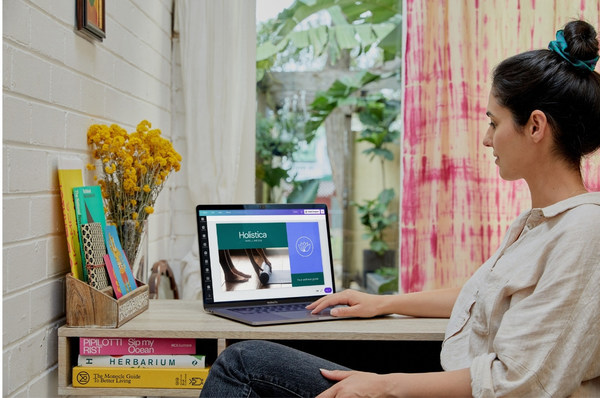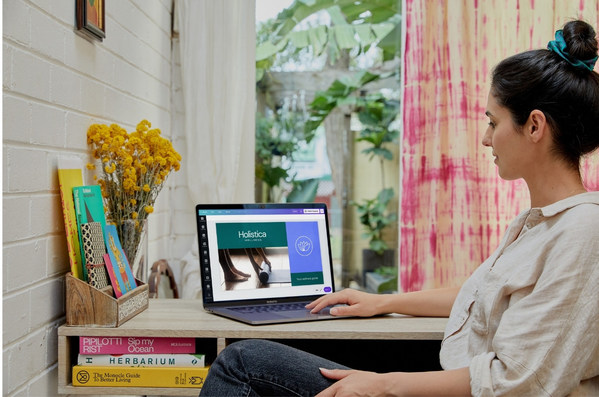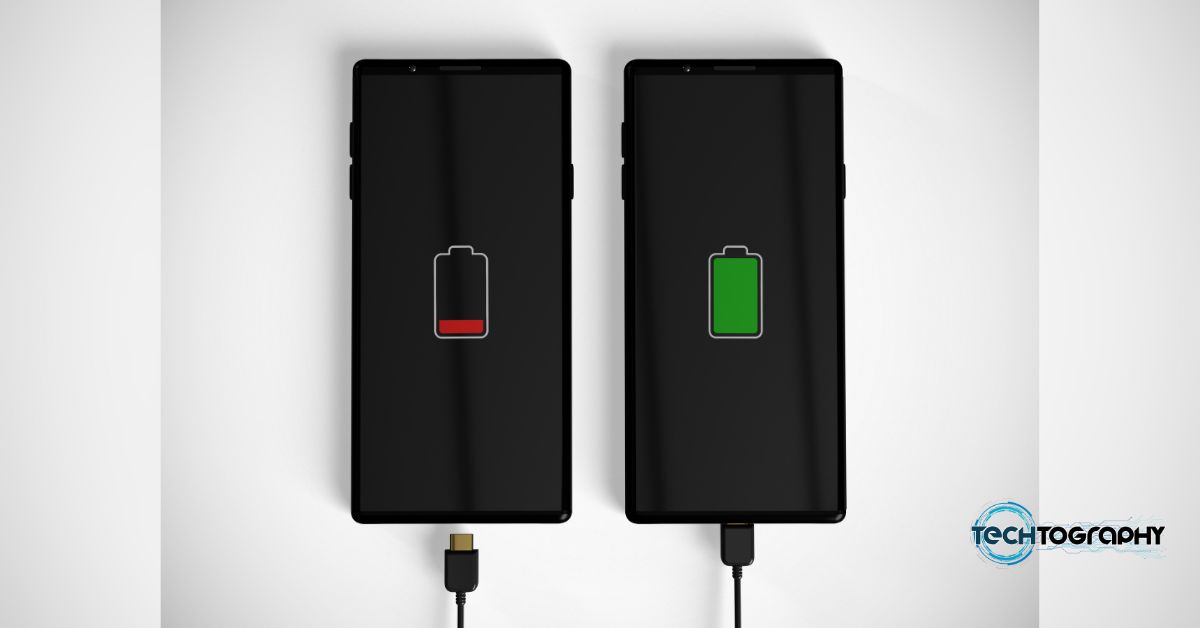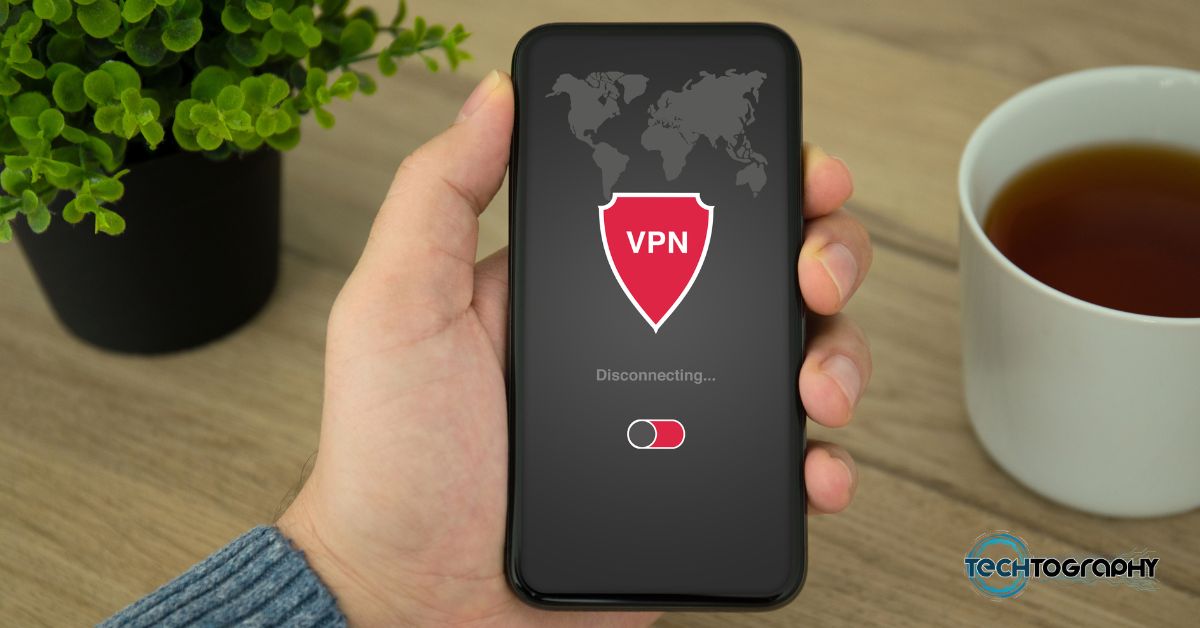 |
Supporting images and infographics available here
A recent study by global visual communications platform, Canva, reveals Americans experienced a number of benefits from working remotely this past year:
- 50% say remote work has improved their productivity;
- 76% say their relationships with co-workers are stronger as a result of the shift to work-from-home during 2020;
- 75% have a new-found confidence in their role and position within a team;
- Almost half (46%) say remote work has improved collaboration with colleagues;
- 52% want a flexible work-home arrangement in 2021, and 30% want to continue working from home full-time indefinitely.
AUSTIN, Texas, March 2, 2021 /PRNewswire/ — As America approaches a year since the country shifted to work-from-home operations due to COVID-19 lockdowns, a new study commissioned by Canva in collaboration with Fingerprint For Success, surveyed 2,000 adults across the U.S. who have been working from home during the pandemic. The results revealed Americans are more productive, collaborative and confident in their roles as a result of the shift to remote work, and have managed to develop stronger connections with colleagues while physically apart.
"The need for both visual communication and online collaboration has never been more universal. In the last year alone, we’ve seen millions of teams adapt their approach to suit this new way of working. From brick and mortar businesses pivoting into online environments to Fortune 500 organizations transitioning to fully remote teams, we’ve seen countless examples of the way Canva’s templates and digital collaboration suite have been able to empower teams of every size to continue doing their best work," said Rob Kawalsky, Canva’s Head of Product.
"The overnight shift to remote work was a huge transition for many people and companies across the globe during the pandemic. Yet as this research reveals, the new workflow models have proven to be a success in terms of establishing productive, engaged and connected teams in a virtual environment," explains Fingerprint for Success CEO, Michelle Duval.
"Collaborating as a team is no longer defined by needing a real-time shared office space, but by how people work together using various online tools and virtual workspaces. It is super important for managers and people leaders in 2021 to understand the individual and team preferences in order to support future hybrid work-from-home and office productivity."
The shift to remote work led to a productivity boom
- The initial move to remote work was found to be challenging for 46% of people surveyed, admitting maintaining focus and productivity at home was difficult.
- However, by the end of 2020 the sentiment changed. Half of Americans (50%) said that the shift to a home working environment made them more productive.
- The top reasons for improved personal productivity include:
– A solo work space — with no-one in sight — was seen as the biggest contributor to boosting productivity, with 42% of Americans agreeing.
– 46% said remote work improved online collaboration with colleagues.
– The flexibility to work from anywhere also rated high (44%).
- Older generations like Gen X (40-55 years) see a solo space as being the most productive environment to work (61%), compared to 35% of millennials.
- More men prefer a solo work space at 45%, compared to 39% of women.
- However, some surveyed said they are most productive in a space with people and activity around them, with 39% of Americans agreeing.
- More women (44%) prefer a combined work space with activity around them, compared to 35% of men.
Fingerprint For Success CEO and founder, Michelle Duval said:
"These findings on collaboration, productivity and work environment validate previous research that open-plan working is not as productive as previously believed. In general, people prefer a solo work space with the opportunity to seek shared space when and as desired."
"A productive team is no longer defined by needing a real-time shared environment, but by how people work together through the adoption of virtual tools and platforms, such as Canva."
The shift to remote work as a result of COVID lockdowns led to improved collaboration and communication between co-workers
- Collaborating online with colleagues while working remotely was seen as an initial challenge for the majority of the population (51% of those surveyed).
- Americans said the sudden shift to remote work also initially impacted their ability to maintain connections with staff or colleagues (42%), and productivity (46%).
- Towards the end of 2020, however, Americans felt a different sentiment:
– 76% said their relationships with co-workers improved while working remotely when compared to the start of 2020, with 38% strongly agreeing.
– Almost half (46%) said they experienced improved collaboration working with teams and co-workers virtually during pandemic lockdowns;
– The switch to remote work also helped improve communication between co-workers. 32% said they experienced increased communication with staff or employees while working via virtual tools or programs from home, noting this as one of the biggest positives from COVID lockdowns.
– Virtual collaboration has been key to promote productivity. 43% said that the best way to achieve results within a team while working remotely is to collaborate on tasks with colleagues via virtual tools or programs.
Canva’s Head of Product, Rob Kawalsky, said: "When the pandemic first struck, we shifted our 1000+ person global team to a remote working environment virtually overnight. We were fortunate that most of our work was already happening online through our platform, which meant we were able to continue collaborating at speed and scale on everything from presentations to documents, sales decks and marketing material from anywhere in the world."
Remote work boosts job satisfaction — Americans feel more confident in their role after developing new valuable skills during lockdown
- Canva’s research shows 75% of Americans have a new sense of confidence in their role and position within a team when compared to the start of 2020.
- Majority of Americans surveyed said they gained valuable new skills while working remotely in 2020. 42% learned new tools or programs, admitting that was one of the biggest positives of lockdown measures.
- Gen X (40-55 years) not only upskilled the most in 2020 (82%), but they’re also the most confident in their position now compared to pre-pandemic (77%).
- Managing mental health was a struggle for all ages. Both older and younger generations admitted to being affected by anxiety during COVID lockdowns.
- Although respondents shared a common struggle to manage their mental health, Gen X (40-55 years) were the most likely to share they struggled to manage their anxiety at 23%. This compared to those aged 24-39 (at 16%).
Fingerprint For Success CEO and founder, Michelle Duval said:
"One of the unexpected benefits of the time in lockdown, after the initial overwhelm and anxiety of establishing a home set up, has been the successful adoption of new tools and platforms that enabled efficient online collaboration. In addition, people who thrive in a solo work space, and had the support of their employer and flexibility to work anywhere, appear to have responded positively to the work-from-home period, feeling more confident about their role in the future".
COVID lockdowns shifted the way Americans communicated with co-workers, with visual tools and virtual platforms key to success
- Americans learnt new ways of sharing information while working remotely in lockdown.
1 in 4 (25%) of those surveyed said they felt more confident communicating information with colleagues via visual interactive documents or virtual presentations. - Verbal or visual documents, such as video calls, and virtual or talking presentations, were the most preferred method of communicating with colleagues from home, with 42% of Americans agreeing.
- Men were more likely than women to utilize visual documents (30% vs 21% women).
- Gen X respondents (40-55) were the most likely to utilize visuals at 35%.
- Emojis have proven to be a useful tool for those working remotely.
– Millennials are the most active users of emojis in the workplace across the board. This compared to baby boomers (36%) are the least active.
– Americans across all generations use the ‘thumbs up’ emoji in work communications the most (61%), followed by the ‘high five’ at 39%.
– Male colleagues are more likely to use ‘heart’ emojis (27% vs 22% women) and the ‘wink’ emoji (21% vs 17%) in the workplace compared to females.
- The most popular emojis with millennials in the workplace include:
– Thumbs up 62%
– High five 41%
– Raise the roof 34%
– Okay 25%
– Smiley face 25%
– Hearts 25%
– Wink 21%
Canva 2020: Most Used Designs Globally
- More than 2.5 billion designs were created on Canva worldwide in 2020
- 129 million presentations were created in 2020
- 5.6 million Zoom backgrounds were used in 2020 — a record result
- More than 3 million mindmaps and brainstorm designs were created globally
Full fact sheet available here
Looking to the future, most Americans want a hybrid working arrangement in 2021
- The majority of Americans surveyed said a hybrid working environment has become the preferred way to work, with 52% of Americans opting for a dual work-home flexible arrangement in 2021.
- Almost a third (30%) of Americans would prefer to remain working from home full-time in 2021, with 28% of younger generations (18-39) preferring this option than returning to the office.
- Gen X (40-55) accounted for the majority (39%) who wanted to continue working from home full-time in the future.
- 18% of Americans however prefer full face-to-face office contact, with 25% of those aged over 56 years opting to return to the office in a full-time capacity.
Americans discover new motivators to achieve results in lockdown — lessons for leaders supporting teams in 2021
- Research shows problem-solving skills were put to the test in lockdown. The majority of Americans (60%) admit the most successful way to motivate themselves and others in a remote environment, was to identify and solve problems versus setting individual goals.
- Almost half (47%) said setting clear goals and targets to work towards for the month, day or week kept them motivated, with 45% using a combination of goals and problems.
- Gen X (age 40-55) are more motivated by goals and targets (56%) vs Gen Z (26%), with Gen Z driven by identifying the biggest problems to solve (61%) within remote teams.
Fingerprint for Success’ Michelle Duval said: "Earlier data collected over the last two decades pre-pandemic consistently found U.S. workers were largely motivated by goal-setting.
"However, these interesting COVID-influenced findings reveal there’s been a shift towards more of a problem focus. Leaders and managers who have primarily relied on goal-orientated leadership, will need to adjust in 2021 and beyond in the way they support and motivate their teams through virtual environments and digital platforms".
After the year that’s been, Americans wish they could look ahead and predict the future as their office superpower for better teamwork.
The top five most-voted office superpowers for better teamwork
- Ability to predict the future 51%
- Ability to pause time 45%
- The power of persuasion 42%
- Ability to read co-workers’ minds 36%
- To have a photographic memory 34%
- What men want: men say they would want to have the ability to read co-workers’ minds (43%) compared to 30% of women for the same skill.
- Both men and women said they would want to be able to pause time (45% and 46% respectively).
The Human Resilience Of The COVID Year
Infographics available here
|
Challenges shifting to remote work |
Benefits experienced by end of 2020 |
|
Ability to collaborate with co-workers 51% |
Relationships with co-workers improved 76% |
|
Maintaining productivity at home 46% |
Feeling more confident in their role heading into 2021 75% |
|
Maintaining connections with colleagues 42% |
Increased personal productivity 50% |
|
Technical set up at home 39% |
Improved collaboration with colleagues 46% |
|
Separating home and work life 37% |
Enjoyed the flexibility to work from anywhere 44% |
|
Communication and making swift decisions 32% |
Upskilled by learning new tools or programs 42% |
|
Managing anxiety amid the uncertainty 17%
|
Experienced more frequent communication with staff or team 32% |
Source: Canva x OnePoll survey (December, 2020). Based on 2000 U.S. respondents working from home.
No Better Time to Grow Your Team on Canva
As remote work becomes the norm, people continue to adopt new ways to collaborate with coworkers online, such as via Canva’s real-time collaboration capabilities. Today, over 50 million people bring their visual creations to life on Canva across the globe each month.
From small business owners collaborating on social media graphics, large enterprises keeping their assets on-brand across global offices, classrooms and non-profits sharing their vision through design, and staff creating greeting cards for colleagues while working remotely, designing together is here to stay.
About Canva
Launched in 2013, Canva is an intuitive online design platform with a mission to empower everyone in the world to design. Featuring a simple drag-and-drop user interface and a vast range of templates ranging from presentations, social media graphics, posters, apparel to videos, plus a huge library of fonts, stock photography, illustrations, video footage and audio clips, anyone can take an idea and create something beautiful. Canva is available on desktop, web, iOS and Android.
About Fingerprint For Success
Fingerprint for Success (F4S) is a professional and personal development platform on a mission to empower individuals and teams to work better together. Featuring a simple user interface and a vast range of tools for wellbeing, happiness, performance, diversity and inclusion, plus a huge library of AI and human coaching programs, anyone can set goals and achieve amazing things at work and in life.




